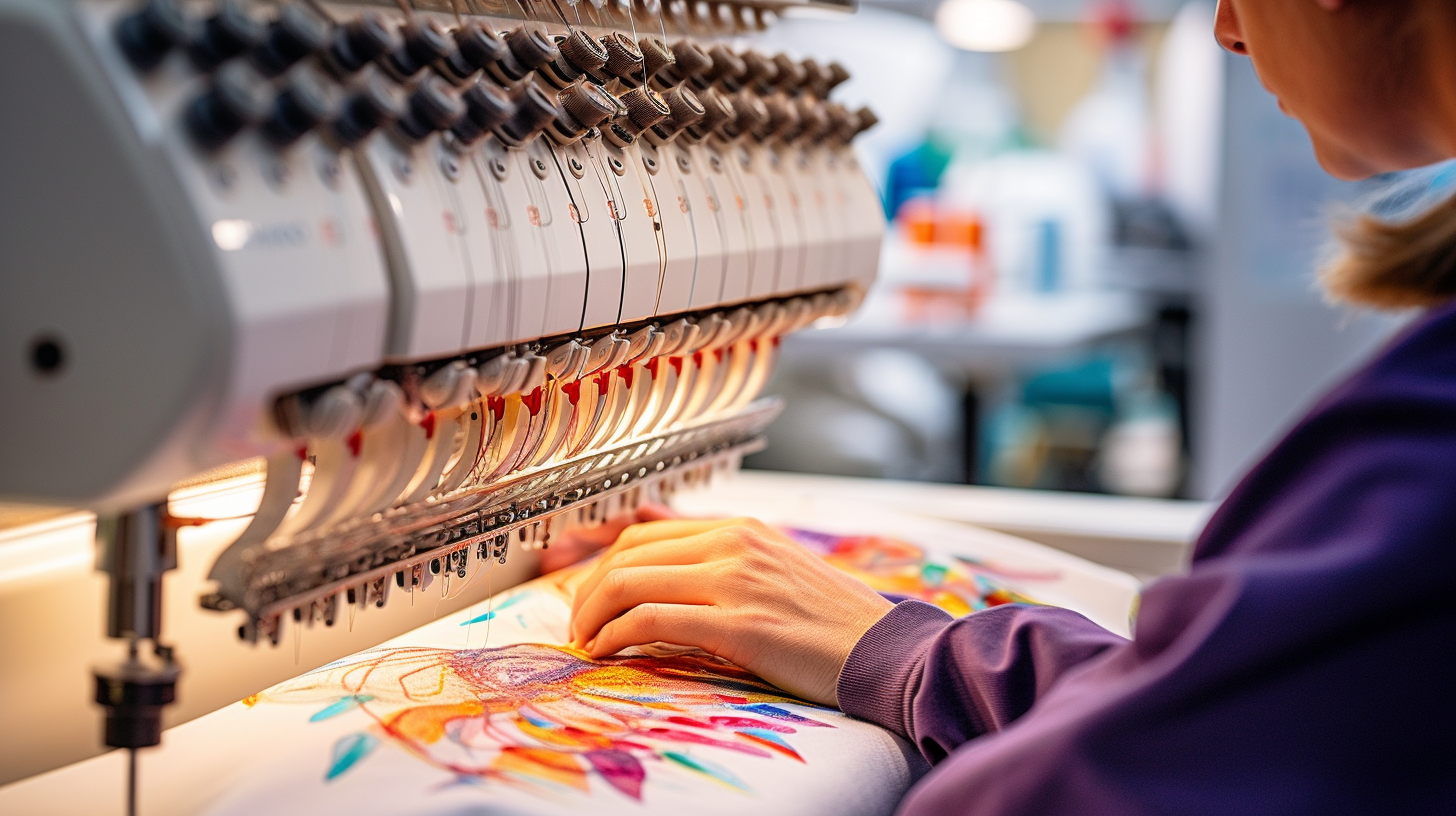Specialist Digitizing for Embroidery: Rapid and Reliable Solution
Specialist Digitizing for Embroidery: Rapid and Reliable Solution
Blog Article
Mastering the Needlework Digitizing Refine: Your Ultimate Guide
Needlework digitizing is a precise craft that calls for precision and experience to translate complex designs into electronic layouts for device needlework. As craftsmens start this trip to master the embroidery digitizing procedure, a thorough understanding of the basics sets the structure for quality. However, beyond the primary knowledge lies a realm of advanced software, specialized devices, and nuanced methods waiting to be discovered. By delving into the subtleties of digitizing, one can unlock a world of innovative possibilities and raise their embroidery projects to brand-new heights.

Recognizing Needlework Digitizing Basics
Embroidery digitizing essentials form the foundation whereupon complex designs are equated into machine-readable layouts for accurate stitching. This preliminary action in the needlework digitizing process is crucial for guaranteeing that the final embroidered item is a devoted representation of the initial design. Understanding embroidery digitizing fundamentals involves understanding crucial concepts such as stitch types, sew instructions, density, rug, and draw compensation.
Stitch types play a vital duty in identifying the visual and textural result of the stitched design. By picking the ideal stitch kind, whether it be satin, fill, or running stitch, digitizers can accomplish the preferred effect and boost the general high quality of the needlework. In addition, stitch instructions influences the flow and measurement of the design, while thickness establishes the spacing and coverage of the stitches.
In addition, underlay stitching supplies stability to the style by securing the textile and stopping distortion throughout the embroidery process. Pull compensation is another crucial factor to consider to counteract the all-natural propensity of material to agreement when stitched. Grasping these embroidery digitizing essentials is basic for creating professional-quality stitched products.
Selecting the Right Digitizing Software
Choosing the suitable digitizing software application is a vital choice that significantly impacts the effectiveness and top quality of the needlework digitizing process. Digitizing for Embroidery. When selecting the right digitizing software, it is important to consider variables such as the complexity of designs you prepare to develop, the user-friendliness of the software application, the degree of customer support supplied, and the compatibility with your needlework maker
There are numerous digitizing software application options offered in the market, varying from standard programs for beginners to sophisticated software for expert digitizers. Some prominent choices include Wilcom EmbroideryStudio, Hatch Embroidery Software Program, and PulseID. These software program plans supply a large range of tools and features to assist you produce detailed styles with convenience.
Prior to choosing, it is a good idea to explore the various software alternatives through cost-free trials or trials to identify which one ideal matches your requirements. Additionally, reading testimonials and looking for suggestions from seasoned digitizers can supply valuable insights into the toughness and weaknesses of each software program bundle (Digitizing for Embroidery). By very carefully evaluating your needs and contrasting the features of different digitizing software application, you can make an enlightened choice that boosts your embroidery digitizing process
Digitizing Devices and Methods

Optimizing Design Settings for Embroidery
Mastering the ins and outs of layout setups is basic in attaining optimal lead to the needlework digitizing procedure, structure upon the structure laid by understanding digitizing devices and techniques. When enhancing style settings for embroidery, it is necessary to consider aspects such as stitch type, thickness, padding, pull settlement, and enrollment. Sew kind selection impacts the total feel and look of the design, with options like satin, fill, and running stitches supplying various structures and results. Thickness describes the spacing and density of stitches, affecting the design's protection and toughness. Proper underlay sewing supplies stability and protects against fabric distortion, particularly for intricate designs or on elastic products. Pull payment adjusts for textile stretch throughout stitching, making certain exact layout duplication. Registration setups line up Digitizing for Embroidery different elements of the layout accurately, keeping total style stability. By fine-tuning these design setups, embroiderers can improve the high quality and precision of their stitched developments.

Troubleshooting Common Digitizing Issues
When experiencing common digitizing issues during the embroidery procedure, it is necessary to understand the origin and implement reliable remedies immediately. One common issue is stitch density issues, where stitches may be as well dense, triggering the fabric to tighten, or also sparse, causing gaps in the design. Changing the stitch thickness setups in the digitizing software can aid fix this problem.
Another constant challenge is thread breaks throughout the needlework procedure. This can occur due to various factors such as incorrect tension setups, plain needles, or utilizing low-quality thread. Guaranteeing appropriate upkeep of the needlework device, consisting of routine needle modifications and stress changes, can decrease the occurrence of string breaks.
Additionally, layout enrollment mistakes can lead to misaligned aspects within the embroidery design. Checking the style placement in click here for more info the digitizing software and making required adjustments before sewing can assist in preventing this problem. By attending to these typical digitizing problems immediately and successfully, you can make certain a smoother needlework process and high-grade finished products.
Conclusion
In conclusion, mastering the needlework digitizing procedure needs a solid understanding of the basics, the right selection of software program, and understanding of tools and techniques. Maximizing layout settings and troubleshooting usual digitizing concerns are vital steps in guaranteeing high-quality needlework results. By following these actions diligently, one can achieve accuracy and performance in the digitizing process.
Report this page